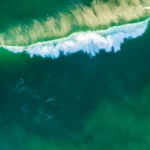Have you realised that the earth was nothing but a gigantic jigsaw puzzle! If you observe the globe closely, you would notice that if you moved the continents of Africa and South America close enough, they would fit together like two perfect pieces of the jigsaw.
A brilliant German meteorologist named Alfred Wegener had the keen eye to notice facts and in 1912, he proposed the theory of continental drift, which stated that the earth’s continents were once joined together in the shape of a supercontinent called Pangaea.
The discovery of matching rock layers on land and fossils separated by vast oceans is the proof of the fact that the various landmasses on the Earth were once united as a huge landmass.
This area slowly got disintegrated and divided into seven parts that we now know as the seven continents.
You would be surprised to know that every year the continents are moving further apart from each other by a few centimetres!
What are Tectonic Plates?
Tectonic plates are the huge slabs of rocks that make up the outer crust of the earth.
According to the scientists, there are eight major tectonic plates and a number of minor plates that act as the outer skin of the earth.
The plates under the oceans are known as the oceanic plates and the ones under continents are known as the continental plates.
These plates keep moving away from or towards each other.
Plate tectonics play an important role in shaping our planet.
It is responsible for mountain range formation, oceanic trenches and occurrence of earthquakes and volcanoes among many other geologic phenomena.
What moves the Tectonic Plates?
Heat in the earth’s core makes the tectonic plates move the way they do. There are three different ways in which the plates move. These three types of movements are: convergent, divergent and transform.
Convergent
In the convergent type of plate movement, the plates move towards one another and give rise to geographical structures like mountain ranges and volcanoes.
India and Asia collided into each other about 55 million years ago, which led to the formation of the Himalayas, the highest mountain range on the earth.
Similarly, when the oceanic plates crash into each other deep trenches like the Mariana Trench in the North Pacific Ocean and underwater volcanoes are formed.
Divergent
In the divergent type of plate movement, the plates move apart.
The magma from the interior of the Earth surges toward the surface and pushes the tectonic plates away from each other.
Scientists believe that millions of years from now, Eastern Africa will split apart from the continent and form a new landmass.
Transform
In the transform type of plate movement, two plates move sideways with respect to each other.
When the two plates rub against each other, a lot of energy is built up, and this energy is sometimes released as earthquakes.
These movements do not produce spectacular geographical features like mountains or oceans.








